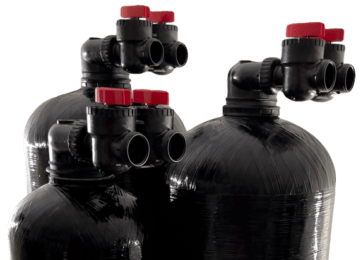
Lead
 OVERVIEW AND TREATMENT OPTIONS:
OVERVIEW AND TREATMENT OPTIONS:
Lead is a metal found in natural deposits commonly used in water distribution lines and household plumbing materials. You cannot taste, smell, or see lead in your water so testing is the only way to be sure of knowing if there are any harmful amounts present in yours. Lead is precipitated by a large number of substances mostly coming as a result of corrosion that occurs after water leaves a treatment facility or enters the home.
SOURCES
Lead seldom occurs naturally in water supplies. It enters drinking water primarily through corrosion of materials that contain lead and are part of the distribution system providing water. This can include lead pipes, brass, and lead-based solder. Dormant water in plumbing systems that contain lead may dissolve it in the water. When that water is drawn from a tap, that initial sample may contain dangerously high levels of lead.
 TESTING
TESTING
Two tests are recommended for testing your drinking water for lead. 1st test should be the first draw of water through the system (usually in the morning) to evaluate lead leached from local plumbing by standing water. 2nd test should be drawn after the lines are flushed to evaluate lead coming from remote sources outside of the plumbing.
HEALTH CONCERNS
Young children, infants, and pregnant woman are particularly vulnerable to lead because the physical and behavioral effects of lead occur at lower exposure levels in children than in adults. A dose of lead that would have little to no effect on an adult can have a significant effect on a child. Lead poisoning in children has been linked to learning disabilities, hyperactivity, central and peripheral nervous system damage, impaired hearing, slowed growth, and impaired formation of blood cells.
Lead accumulating in our bodies over time will store it in our bones along with calcium. During pregnancy, lead is released as maternal calcium from the bones and is used to help form the bones of the fetus. This can reduce fetus growth and cause premature birth.
Lead poisoning in adults can also be harmful. It has been known to cause reproductive issues in both women and men, decreased kidney function, increased blood press and incidence of hypertension.
TREATMENT
Fist step in removing lead is to remove old piping. This would be the best way to prevent lead from being introduced into drinking water. This may not be cost effective though so other alternatives are a necessity.
REVERSE OSMOSIS BWS uses industry best RO’s to help you design an effective lead removal system for your water issues.
HM-XR SERIES BWS has created a unique and innovate line of heavy metal reducing filters. Our dynamic approach is the most cost effective way to remove lead from a water distribution source.

